If you are looking for an eye catching plant to fill your containers this year with big color and interest, then you need to be growing coleus!
Not only can coleus fill your pots with long lasting beauty – it also happens to be incredibly resistant to pests – including deer and rabbits. Adding to its allure, the uniquely bright and patterned foliage doesn’t take a lot of effort or nutrients to maintain. In fact, coleus is one of the lowest maintenance plants around.
Unlike many annuals and perennials, coleus is grown not for its flowers, but instead, its vivid and radiating leaf patterns. The different colors and patterns on its foliage add a unique look to any space it is grown in. What’s better is that there are new varieties being introduced each year, giving gardeners even more choices than ever before.
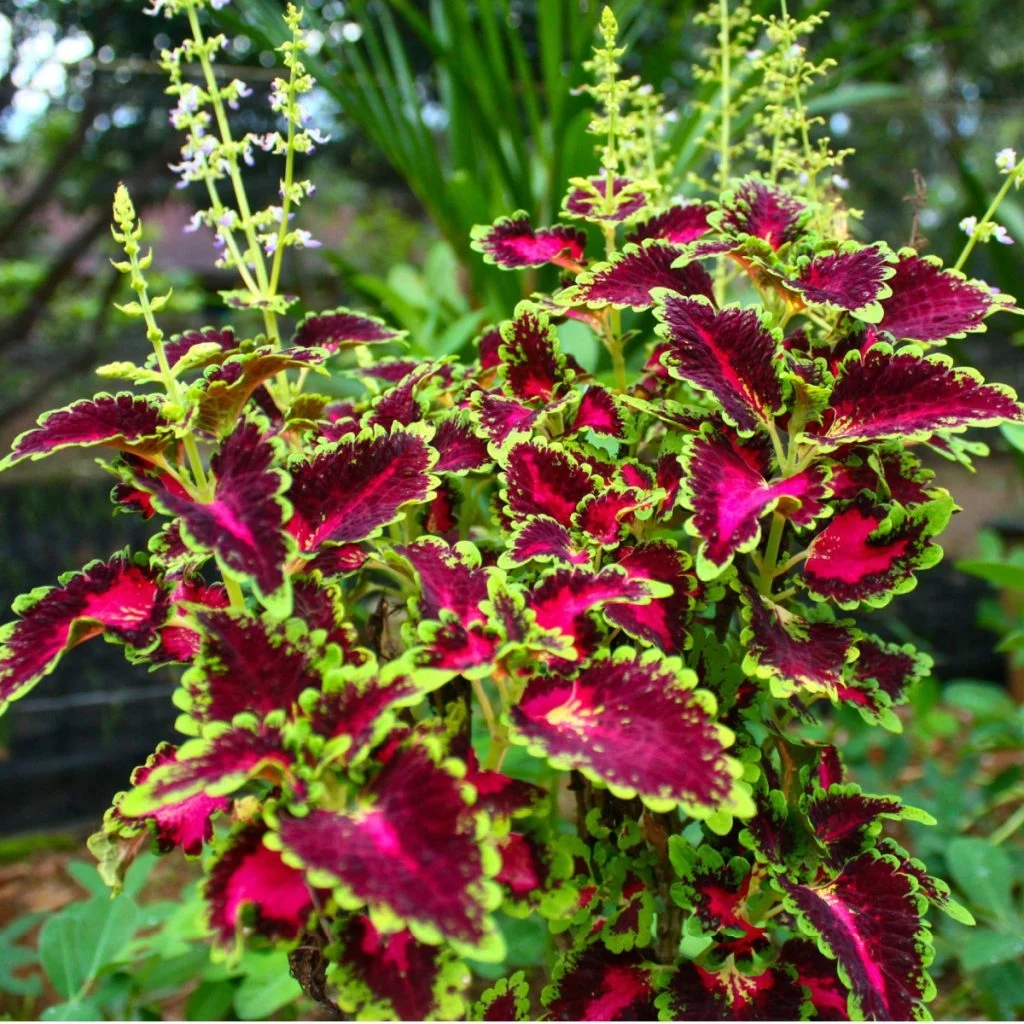
Why You Should Be Growing Coleus In Containers
Coleus will grow to the size of its container quite easily. But what really makes this plant special in containers is that most pests leave it alone – including deer, rabbits and squirrels. Why? Because the plant contains a compound that is actually toxic to them. And all of those beautiful leaves with their intricate patterns sends a signal to them to stay away.
Coleus will also grow and fill any container you choose. If you are wanting plants to stay small and tidy, then choose a smaller container. If you want plants to spread out and fill up a larger area, choose a larger container. Coleus is also a perfect plant for growing with other container plants, growing well with vining plants or even large spikes.
The material of the container you use does not matter. It just needs to have sufficient drainage holes since coleus does not like to sit in standing water. If you have a container you want to use that doesn’t have drainage, either add them yourself or use a plastic growing container with holes and place that inside your container.
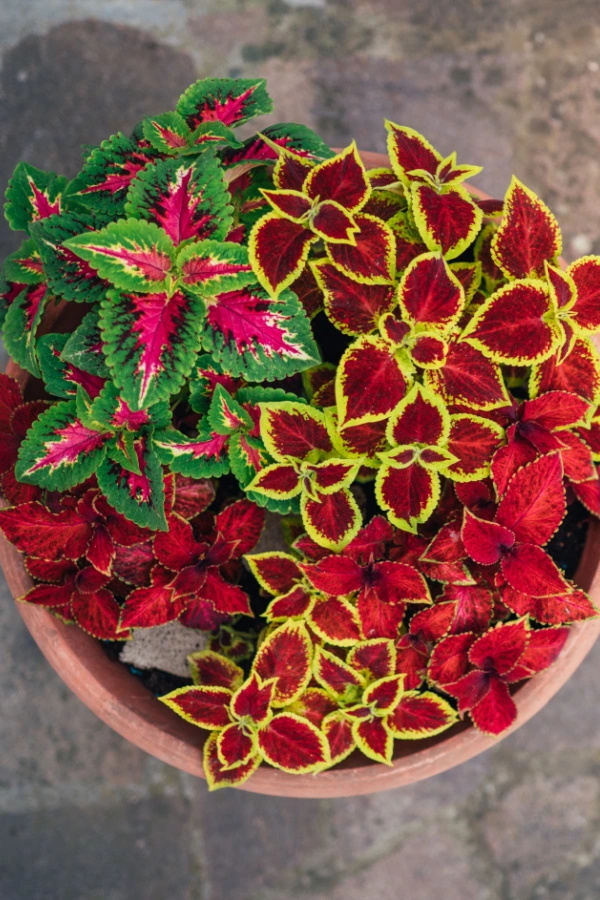
The Importance Of Good Soil When Growing Coleus In Containers
With any container plant, the soil you use is crucial to having a successful growing season. If you use poor soil, the plant will struggle to thrive and even survive in some cases. Proper soil will set your plants up for success right from the start,
When you grow coleus as potted plants, choose a potting soil mix that is made for container plants. Mix in a few cupfuls of compost or worm castings to help improve the nutrients as well as the soil drainage when you initially transplant your coleus. Affiliate Link: Miracle-Gro Potting Mix, For Container Plants.
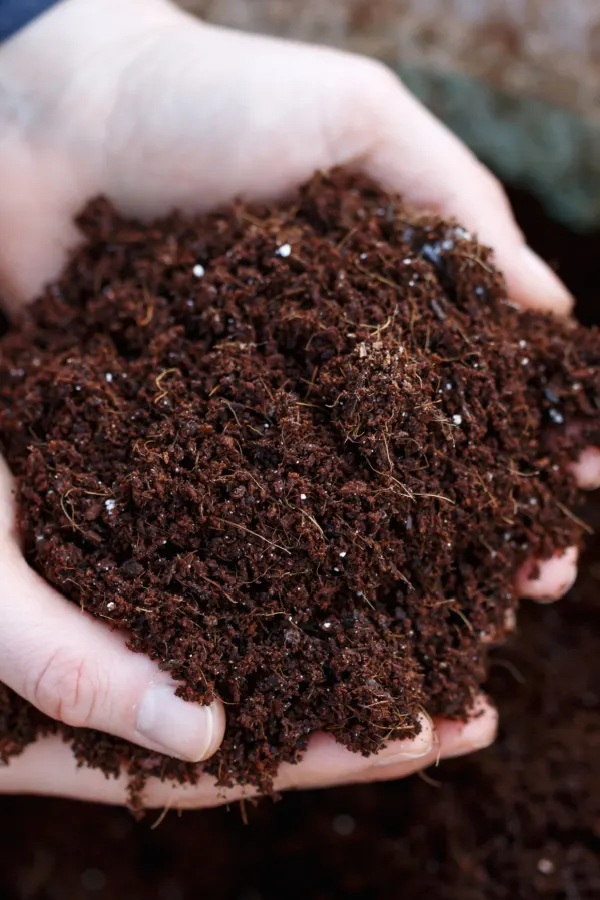
Watering Coleus
Coleus plants tend to be a bit more sensitive to overwatering and underwatering compared to other plants. This is especially the case for potted coleus plants. If you see that the plant’s foliage has started to droop and look limp, you need to water the plant more.
On the other hand, foliage that is starting to brown and turn mushy indicates overwatering and root rot. More times than not, the plant will suffer from overwatering more than underwatering.
Having a consistent watering schedule is best for potted coleus plants. Check the soil moisture in your container plants daily. If the soil is moist about an inch down, then hold off on watering. If your soil is dry, it’s time to give the plants a nice drink.
Water coleus plants deeply and early in the day. Doing so early in the morning gives plants plenty of time to dry out and have some of the water evaporate during the hottest part of the day.
Most coleus can handle a combination of part sun and part shade without having any adverse effects on their foliage color and growth. With all of the different varieties of coleus though, you should have no issues finding a type to work for your specific growing location.
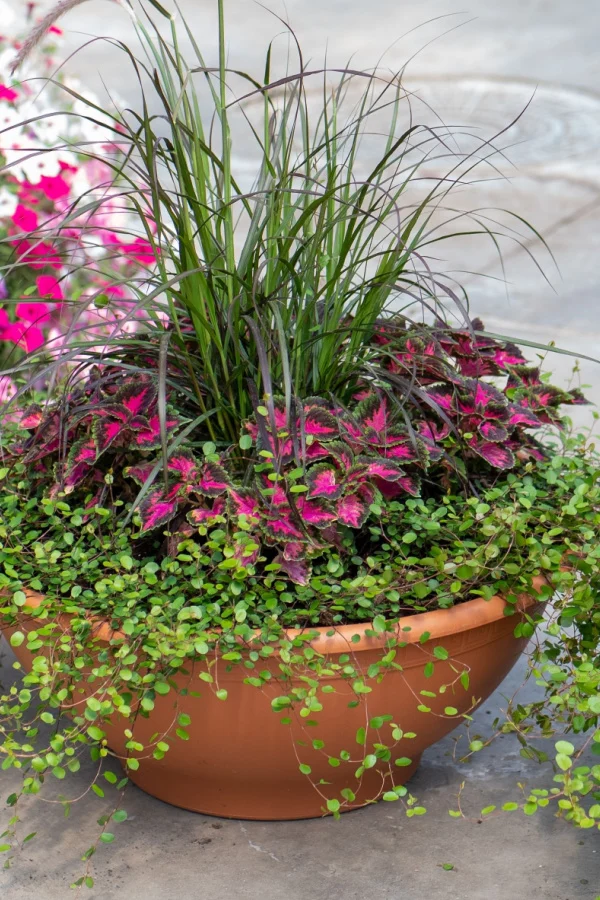
Also, keep in mind that coleus plants do not do well with wind. Their stems and foliage can easily snap or get broken off during harsh winds. If that happens, just remove the bottom half of the leaves and stick the piece back into the soil. It’s likely the coleus piece will put out roots and become another part of your potted plant display.
Fertilizing When Growing Coleus In Containers
Coleus is not a high nutrient plant like most other annuals that need more frequent fertilizing. For coleus, adding fertilizer once a month is more than enough to keep them thriving.
When fertilizing, a balanced, slow release granular fertilizer will work best to feed the plants slowly over a longer time. Liquid fertilizers will work, but need to be diluted and applied every few weeks instead of a monthly granular option. Affiliate Link: 10-10-10 Plant Fertilizer Slow Release All Purpose Granular Fertilizer.
Long Term Maintenance
The last tip to keeping your potted coleus plants healthy and growing strong all season in containers is to pinch and prune plants as needed.
Pinching the coleus plant needs to occur when plants start to become tall and leggy. When you pinch off a stem right after a leaf node, the plants will then produce additional stems and branch out as opposed to continuing up. You can start to pinch plants any time after the stems are about six inches tall.

Pruning needs to be done if your coleus plant produces blooms. Coleus blooms appear as tall, thin spikes with tiny white or purple blooms. They do not really add much visual appeal, since coleus is usually grown for foliage growth. In order to allow your plants to focus their resources and energy on producing beautiful foliage as opposed to seeds, prune off the blooms.
Creating More Coleus Plants For Free!
The best way for growing even more coleus plants for containers is to propagate plants you already have growing. Not only is it easy to do, but it won’t cost you a thing!
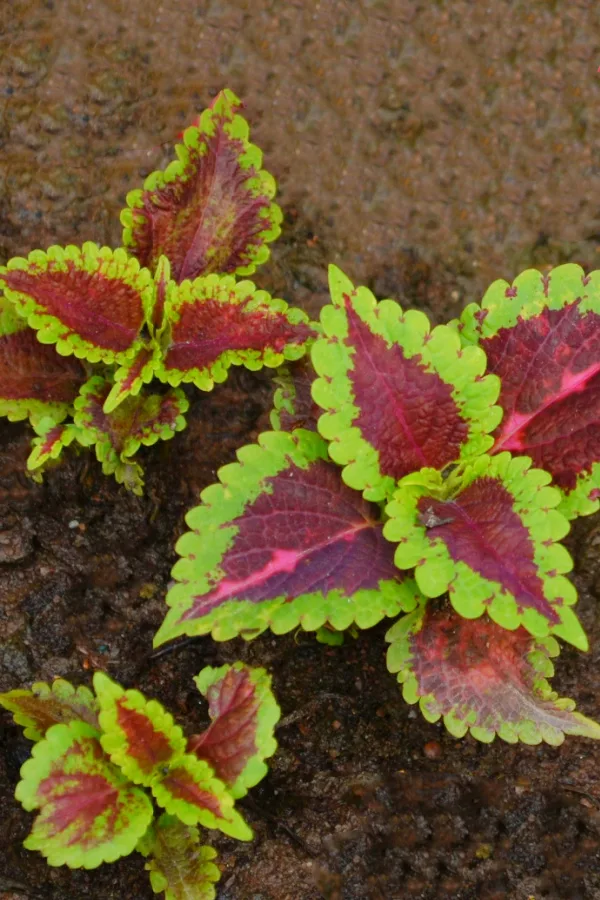
In order to propagate coleus, you need to get a stem cutting. Use pruners, scissors, or a knife to cut off a 4 to 6-inch long stem. Cut down all the way to a leaf node so you don’t end up with a stump left behind.
Remove all of the leaves on the bottom half of the cutting. Place the cutting in a small container filled with water in a warm, bright location. A sunny window works quite well for this. It will take about two to three weeks for new roots to develop. Once they do – simply plant in the soil and you have a new coleus plant!
You can also quite easily keep coleus plants alive over the winter as a houseplant. And then, simply take cuttings to have free plants for your containers once again next year! See our article: How To Keep Coleus Plants Alive Over The Winter As A Houseplant.
Here’s to growing coleus in containers this year – and to creating the best low maintenance, pest proof pots around!
This Is My Garden
Follow Our Facebook Page For Great Gardening Tips And Advice! This Is My Garden Facebook Page
This Is My Garden is a garden website created by gardeners, for gardeners. Jim and Mary Competti have been writing gardening, DIY and recipe articles and books and speaking for over 15 years from their 46 acre Ohio farm. They publish three articles every week, 52 weeks a year. Sign up today to follow via email, or follow along!
